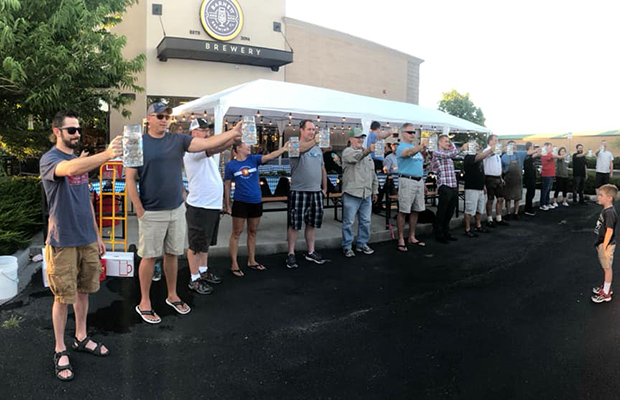
When Kurtis Cummings started Switchyard, he didn’t like the aspect of only paying tipped employees the state minimum of $2.13 per hour.
“So I was like, let’s pay our staff $3 an hour … it’s more than the minimum wage. And that just didn’t feel right either,” he said. So he started to dig into the idea that Optimism Brewing‘s Gay Gilmore had installed by paying well above minimum wage and eliminating the need for consumers to tip service staff.
“We’re not really a tip-free business because it really is embodied in our culture,” he explained at the 2022 Craft Brewers Conference in Minneapolis. “It aligns with our guiding principles and aligns with our values.”
Along with Gilmore and Cummings, Surly‘s VP of Hospitality, Dan DiNovis, joined the conversation to explain the different ways these three breweries forego having consumers tip and instead pay higher wages.
“I think one of the great pieces about it is the guaranteed income,” DiNovis said. “If it’s busy you’re guaranteed income and it’s super slow, you’re still guaranteed that income and not depending on those tips.”
Surly and Switchyard for a time experimented with tip-pooling as well, but in-fighting about who gets what percentage caused them to re-think that strategy as well.
READ MORE: Peak Surly?: Ansari Wrestles with Minnesota Brewery’s Future
All three have different wrinkles in how they approach it, but all say communication with staff and passing that info along to consumers helps.
Of course, some of the wage differentials come down to increases in different ways in prices at the brewpubs.
“You may need to really do the math and check and make sure that that’s the case,” Gilmore said, noting that labor is about 30% of Optimism’s overall expenses.
“Every 5% increase in prices results in a 15% increase in salary,” she explained. “So you should really run the numbers before you think there’s just no way I can afford that kind of price increase.
“But even when we have done price increases, we’re just really upfront with our customers about it, because we just like to operate transparently. And we don’t get any of that backlash. They know what’s going on. They’re not stupid. And so it’s just better to be upfront.”
Surly kept its prices the same, opting instead, DiNovis said, to put the service charge on the check.
“For me personally, I think there’d be sticker shock for something like a $20 cheeseburger on our menu,” he said. “Prices right now with supply chain, and everything else that’s happening in the food costs are already so high. I would just rather be transparent with our customers and say, this is what you’re paying for food. This is what you’re paying for that service charge. This is that hospitality-included piece. It’s just being transparent with the customers.”
Added Switchyard’s Kiley Memmott, who is the brewery’s Hospitality Director: “I guess the most important thing is the communication link. We’ve got it posted everywhere. It’s on our menus, it’s on our website. It’s the first thing you see. But the most important thing I would add to that is communicating with your staff in how to communicate with customers. Let them be honest, let them give their actual thoughts and feelings on it.”
In terms of staff retention, DiNovis said teamwork mentality is at an all-time high.
“It’s not every person on the floor fighting for tips or arguing on whose table it is,” he said, adding that Surly does recruit a little bit of a younger population and less veteran staff at the facility.
“I think it’s great because they have no bad habits,” he said. “We can train them the way that we want to teach them how to do their job. And they’re super eager.
“The opportunity to bring somebody in that’s super passionate about beer, food, and service, and they are just super excited about what we’re doing. It’s been a breath of fresh air for us.”
Cummings did tackle the contention of an employee that may be making $40/hour in tips and sees the possibility of losing money overall.
“What if they’re making $40 an hour on a busy Friday or Saturday night,” he pondered. “Do they have to work every Friday and Saturday night? Like in Bloomington, we have a lot of staff that are grad students, they’re in a period of life where they have a lot of weddings and things going on. Now, they don’t have to miss those things on the weekends, because they can work a Tuesday or Wednesday.
“When you look at [an employee’s] pay over the course of a week, when you do your math and you look, are they actually making $40 an hour, every single shift consistently?”






Be the first to comment